Planning a trip to a national park can feel a little overwhelming, right? Especially when that park is as vast and iconic as Yellowstone. Where do you even begin? What are the must-see spots? How much time do you really need? Well, you’ve come to the right place! I recently had the incredible opportunity to explore Yellowstone’s geothermal landscapes, witness its amazing wildlife, and soak in its stunning beauty. Let me share my experiences and guide you through creating your perfect Yellowstone adventure.
Planning Your Yellowstone Adventure
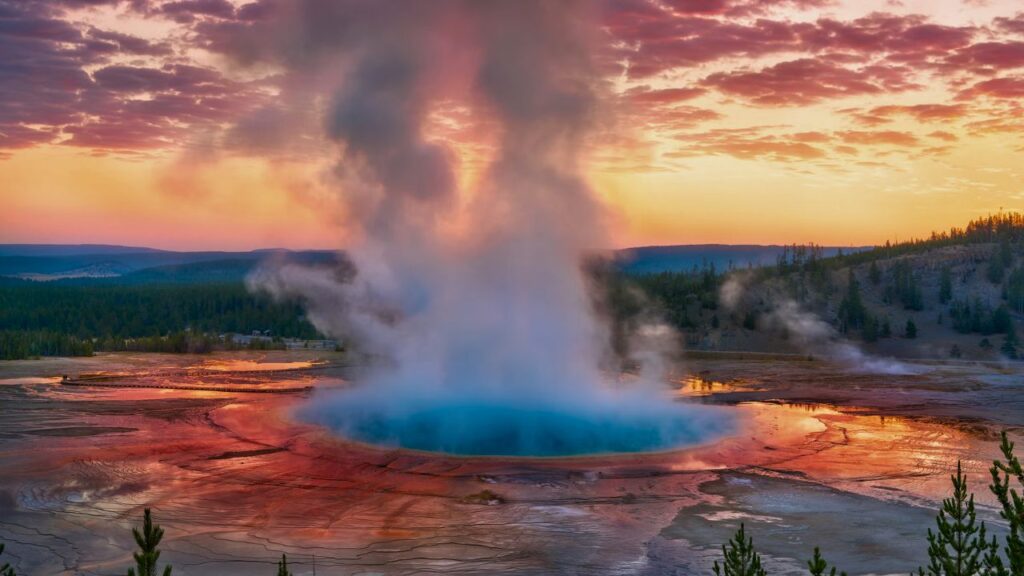
Before your Yellowstone journey, careful planning is essential to make the most of your trip.
Best Time to Visit
The optimal time to visit Yellowstone is during the summer months (June to early September). This period offers the most favorable weather conditions, with all roads, campgrounds, and trails typically open. However, summer also attracts the largest crowds, so be prepared for busier conditions.
For those seeking a slightly less crowded experience, consider visiting during the shoulder seasons (May or October). The weather can be more unpredictable during these times, but you’ll likely encounter fewer visitors and still have access to most of the park’s highlights.
A unique perspective of Yellowstone can be experienced during the winter months, when the park transforms into a snowy wonderland. Access is limited to snow coaches and snowmobiles, offering a more secluded and adventurous experience.
How Much Time to Spend
To truly appreciate the wonders of Yellowstone, it’s recommended to spend at least three days in the park. A long weekend allows you to see the major geothermal features and the Grand Canyon of the Yellowstone. With four to five days, you can explore more leisurely and include wildlife watching in the Lamar Valley. For a comprehensive experience, consider spending a full week exploring the diverse landscapes and attractions the park has to offer.
Getting There and Around
Yellowstone National Park is accessible through five entrances:
| Entrance | Location | Nearest Airport |
| West Entrance | West Yellowstone, Montana | Yellowstone Airport (WYS) |
| North Entrance | Gardiner, Montana | Bozeman Yellowstone Int’l Airport (BZN) |
| East Entrance | Cody, Wyoming | Yellowstone Regional Airport (COD) |
| South Entrance | Jackson Hole, Wyoming | Jackson Hole Airport (JAC) |
| Northeast Entrance | Cooke City, Montana (seasonal access) | Billings Logan Int’l Airport (BIL) |
Renting a car is highly recommended for exploring Yellowstone, as there is no public transportation within the park. This provides the flexibility to travel at your own pace and access various points of interest. Be mindful of potential traffic jams caused by wildlife on the roads and utilize pullouts when observing animals to avoid obstructing traffic.
Must-See Spots and Iconic Experiences
Yellowstone is brimming with natural wonders. Here are some of the absolute must-see spots and iconic experiences that should be on your itinerary:
1. Old Faithful
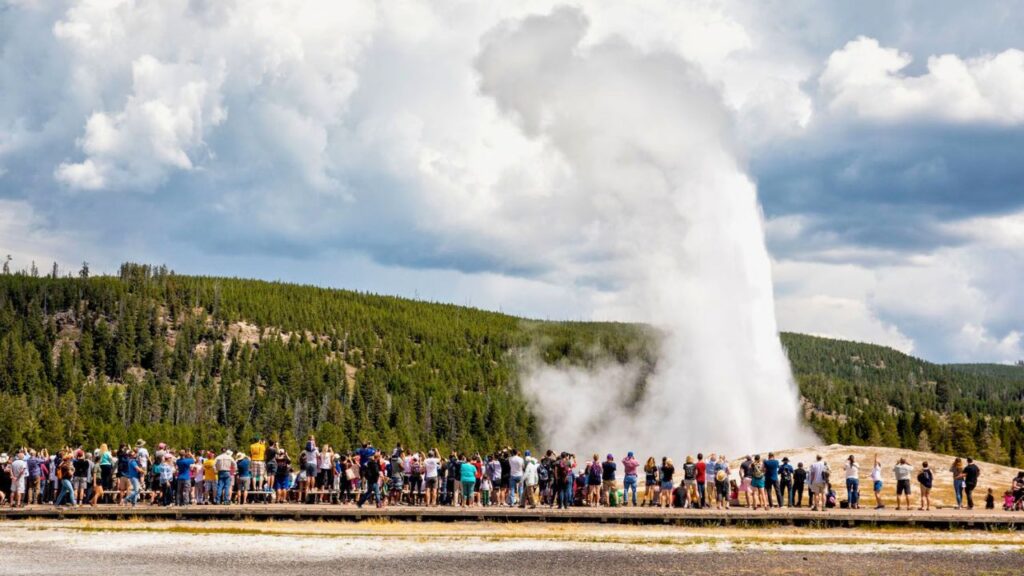
No trip to Yellowstone is complete without witnessing the eruption of Old Faithful. This world-famous geyser is renowned for its predictable and spectacular displays, erupting approximately every 50 to 110 minutes and reaching heights of over 100 feet. Arrive early to secure a good viewing spot on the boardwalk surrounding the geyser or consider hiking to the Observation Point for an elevated perspective. For a unique experience, watch the eruption from the historic Old Faithful Inn.
2. Upper Geyser Basin
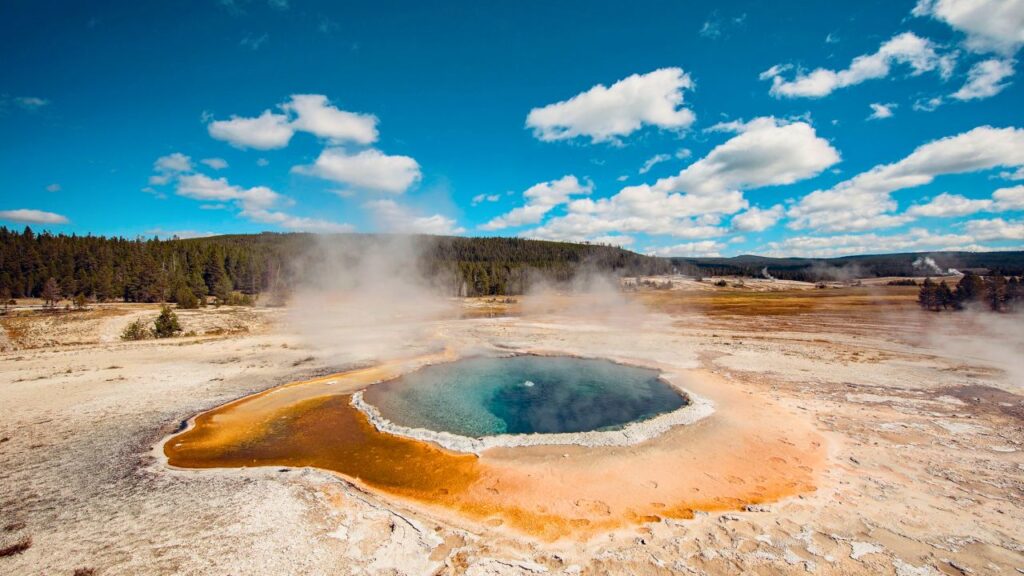
Adjacent to Old Faithful, the Upper Geyser Basin is a geothermal wonderland containing the highest concentration of geysers in the world – over 150 within a single square mile! Explore the extensive network of boardwalk trails to discover a variety of fascinating features, including:
- Solitary Geyser: A beautiful geyser with vibrant blue water.
- Castle Geyser: Known for its cone-shaped formations.
- Morning Glory Pool: A stunning hot spring with a kaleidoscope of colors.
- Grotto Geyser: A unique geyser erupting from a cone resembling a grotto.
Allow at least two hours to wander through this captivating landscape.
3. Grand Prismatic Spring
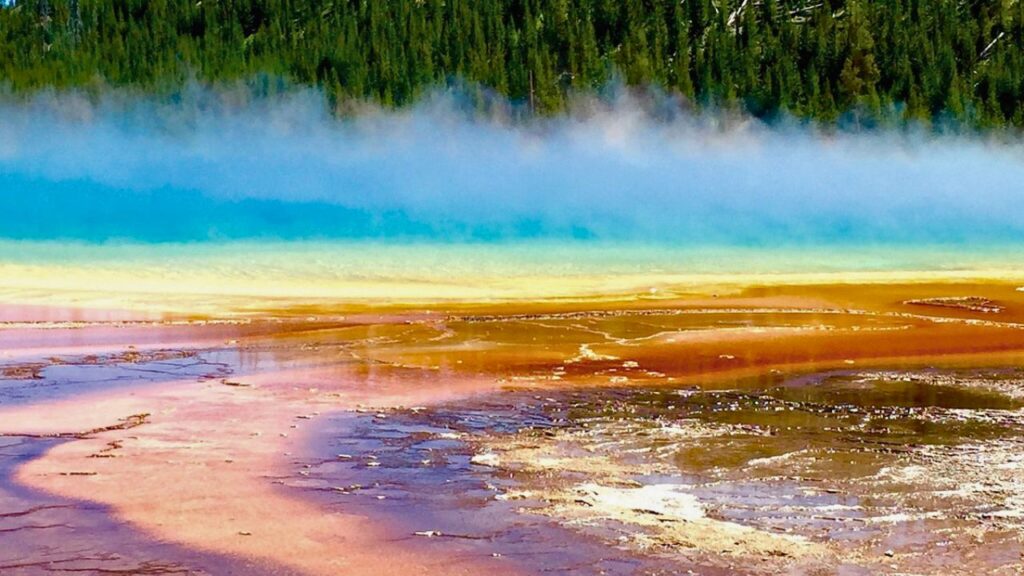
Located in the Midway Geyser Basin, the Grand Prismatic Spring is Yellowstone’s largest and most photographed hot spring. Its breathtaking array of colors, ranging from deep blues and greens in the center to vibrant oranges and yellows on the edges, is caused by thermophiles – heat-loving bacteria.
There are two main ways to experience the Grand Prismatic Spring:
- Midway Geyser Basin Boardwalk: This 0.8-mile boardwalk offers an up-close view of the spring and its surrounding features.
- Grand Prismatic Spring Overlook: A 1.6-mile round trip hike from the Fairy Falls parking lot leads to an elevated viewpoint, providing a panoramic perspective of the spring’s immense size and vibrant colors. Visiting midday on a sunny day often yields the most intense colors, but be prepared for potentially crowded parking.
4. Grand Canyon of the Yellowstone
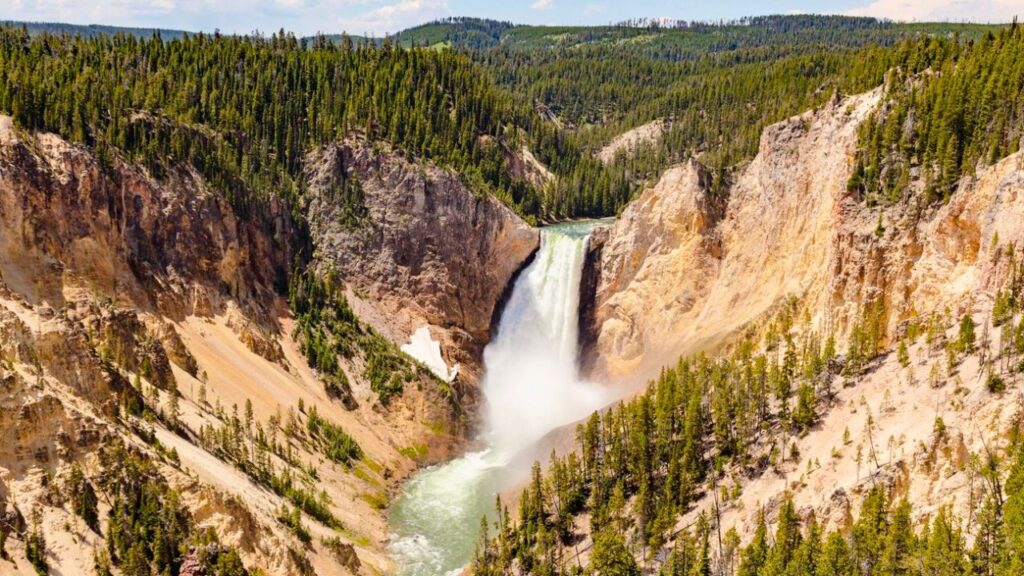
The Grand Canyon of the Yellowstone is a majestic spectacle carved by the powerful Yellowstone River. The canyon stretches for approximately 20 miles and features dramatic cliffs, cascading waterfalls, and vibrant hydrothermal features. Be sure to explore both the North and South Rims for different perspectives:
- South Rim: Offers iconic views of the Lower Falls from viewpoints like Artist Point, which is particularly renowned for its picturesque scenery.
- North Rim: Provides closer views of the Lower Falls from Lookout Point and Red Rock Point. You can also hike down the Brink of the Lower Falls Trail for an exhilaratingly close encounter with the powerful waterfall.
5. Lamar Valley
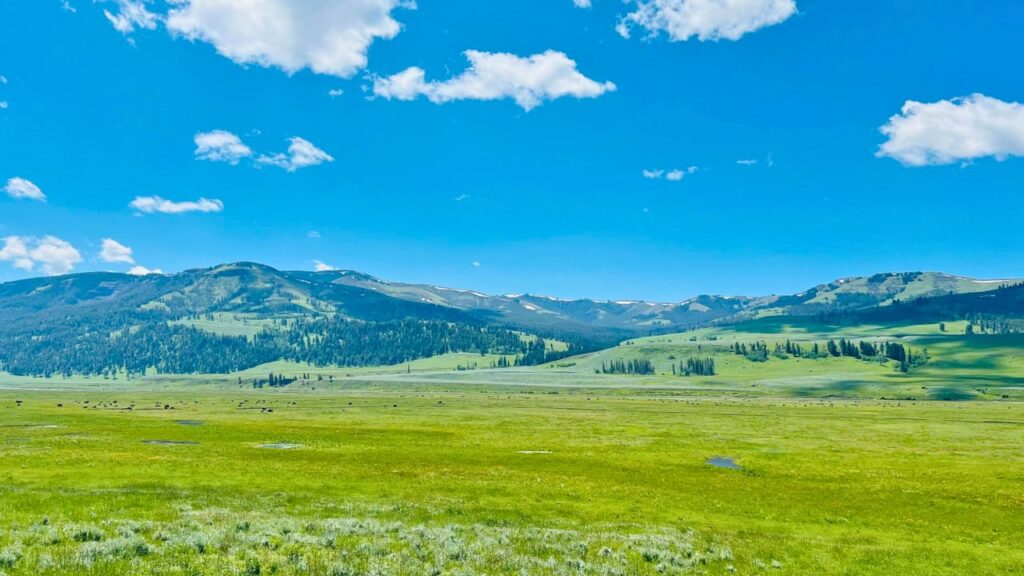
For wildlife enthusiasts, a visit to Lamar Valley in the northern part of Yellowstone is an absolute must. Often referred to as “America’s Serengeti,” this expansive valley is home to a diverse array of wildlife, including:
- Bison
- Elk
- Pronghorn Antelope
- Bears (Grizzly and Black)
- Coyotes
- Wolves (Lamar Valley is a prime wolf-watching location)
The best times for wildlife viewing are typically during dawn and dusk. Be patient, bring binoculars or a spotting scope, and maintain a safe distance from all animals. Be prepared for potential “animal traffic jams” as herds of bison or elk cross the roads.
6. Mammoth Hot Springs
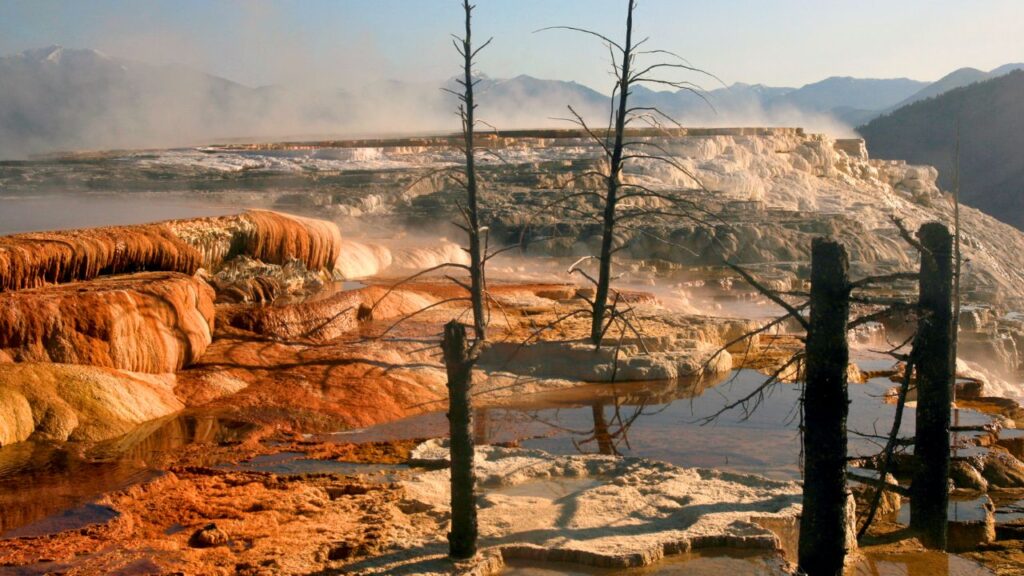
Located near the North Entrance, Mammoth Hot Springs presents a unique landscape of terraced formations created by hot, acidic water dissolving limestone. The dissolved limestone is then redeposited as travertine, forming the ever-changing terraces. Explore the boardwalks around the Upper and Lower Terraces to witness this fascinating geological process.
Other Notable Attractions and Activities
Beyond the major landmarks, Yellowstone offers a plethora of other attractions and activities to enrich your visit:
- Hayden Valley: Another excellent area for wildlife viewing, particularly bison, located between the Grand Canyon of the Yellowstone and Yellowstone Lake.
- Yellowstone Lake: The largest high-elevation lake in North America, offering opportunities for boating, kayaking, and fishing. Consider a visit to the West Thumb Geyser Basin on the lake’s shore, where hydrothermal features meet the lake’s edge.
- Norris Geyser Basin: Another significant geyser basin with distinct areas like the Porcelain Basin and Back Basin, showcasing a variety of colorful thermal features and the world’s tallest active geyser, Steamboat Geyser.
- Firehole River: A unique river where you can find designated swimming areas heated by geothermal activity.
- Boiling River: Another location where you can safely soak in naturally heated water, located near Mammoth Hot Springs.
- Fairy Falls: One of Yellowstone’s tallest waterfalls, accessible via a scenic hike.
- Mount Washburn: Hike to the summit for panoramic 360-degree views of the park.
- Park Museums: Explore the park’s visitor centers and museums to learn about Yellowstone’s natural history, wildlife, and geological forces.
3-Day Itinerary for First-Time Visitors
For those visiting Yellowstone for the first time and with a limited timeframe, here’s a suggested 3-day itinerary to experience some of the park’s highlights:
Day 1: Lamar Valley and Mammoth Hot Springs
- Start your day early with a drive to Lamar Valley for prime wildlife viewing opportunities. Keep an eye out for bison, elk, pronghorn, and potentially bears and wolves. Remember this drive can take approximately 2 hours from the West Yellowstone area.
- On your way back from Lamar Valley, make a brief stop at Undine Falls for a scenic view.
- Explore the unique travertine terraces at Mammoth Hot Springs.
- Consider a relaxing dip in the Boiling River, located a short drive from Mammoth Hot Springs.
- Conclude your day with a visit to the Norris Geyser Basin, exploring areas like Porcelain Basin and Back Basin for their colorful thermal features.
Day 2: Old Faithful and Grand Prismatic Spring
- Dedicate your morning to the Old Faithful area. Witness an eruption and explore the surrounding Upper Geyser Basin with its numerous geysers and hot springs.
- In the afternoon, head to the Midway Geyser Basin to marvel at the vibrant colors of the Grand Prismatic Spring. Consider taking the short hike to the overlook for a breathtaking panoramic view.
- For a relaxing end to the day, consider a stop at the Firehole River for a swim in its geothermally heated waters.
Day 3: Grand Canyon and Yellowstone Lake
- Begin your day by exploring the Grand Canyon of the Yellowstone. Visit Artist Point on the South Rim for an iconic view of the Lower Falls, followed by Lookout Point on the North Rim for a closer perspective.
- Spend some time at Yellowstone Lake. Consider renting a kayak to enjoy the lake from a different perspective.
- Visit the West Thumb Geyser Basin, where you can witness the fascinating contrast of hydrothermal features against the backdrop of Yellowstone Lake.
- If time permits and you’re keen on more wildlife viewing, consider a late afternoon visit to Hayden Valley for a chance to spot wolves.
Practical Tips for Your Yellowstone Trip
To ensure a smooth and enjoyable trip, keep these practical tips in mind:
Budgeting
Yellowstone can be an expensive destination, particularly during peak season. Factor in costs for:
- Park entrance fees
- Accommodation (in-park lodging or nearby towns)
- Transportation (car rental, fuel)
- Food and beverages
- Activities and tours
Consider bringing your own snacks and drinks to help save on costs. Basic cabin accommodations within the park can start around $150 per night.
Safety
Yellowstone is wild country, and safety should be a top priority:
- Wildlife: Never approach or feed any wildlife. Maintain a safe distance (at least 25 yards from most animals and 100 yards from bears and wolves). Carry bear spray and know how to use it when hiking in grizzly country. Make noise while hiking to alert bears to your presence and avoid hiking alone.
- Geothermal Areas: Stay on marked trails and boardwalks in geothermal areas. The ground can be unstable, and the hot springs and geysers are extremely hot and can cause severe burns.
- Hiking: Be prepared for varying weather conditions and altitude. Wear appropriate footwear, carry plenty of water, and inform someone of your hiking plans.
Packing Essentials
Be prepared for changeable mountain weather, even in summer. Pack layers of clothing, including:
- Waterproof and windproof outer shell
- Warm layers (fleece or down jacket)
- Moisture-wicking base layers
- Sturdy hiking boots
- Hat and gloves
- Sunscreen and sunglasses
- Insect repellent
- Binoculars or a spotting scope for wildlife viewing
- Camera to capture the stunning scenery
A Journey to Remember
A trip to Yellowstone National Park is more than just a vacation; it’s an immersion into a world of unparalleled natural beauty and wonder. From the iconic eruption of Old Faithful to the vibrant hues of the Grand Prismatic Spring and the majestic Grand Canyon of the Yellowstone, every corner of this park offers a breathtaking spectacle. Whether you’re captivated by the geothermal activity, mesmerized by the abundant wildlife, or simply seeking solace in the stunning landscapes, Yellowstone promises an unforgettable journey that will leave you with lasting memories. So, pack your bags, prepare for adventure, and get ready to experience the magic of Yellowstone National Park.
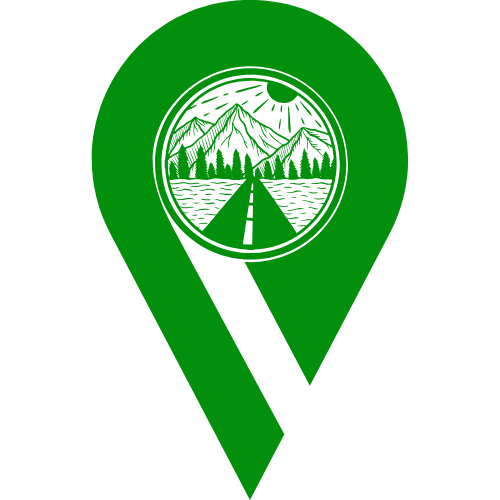
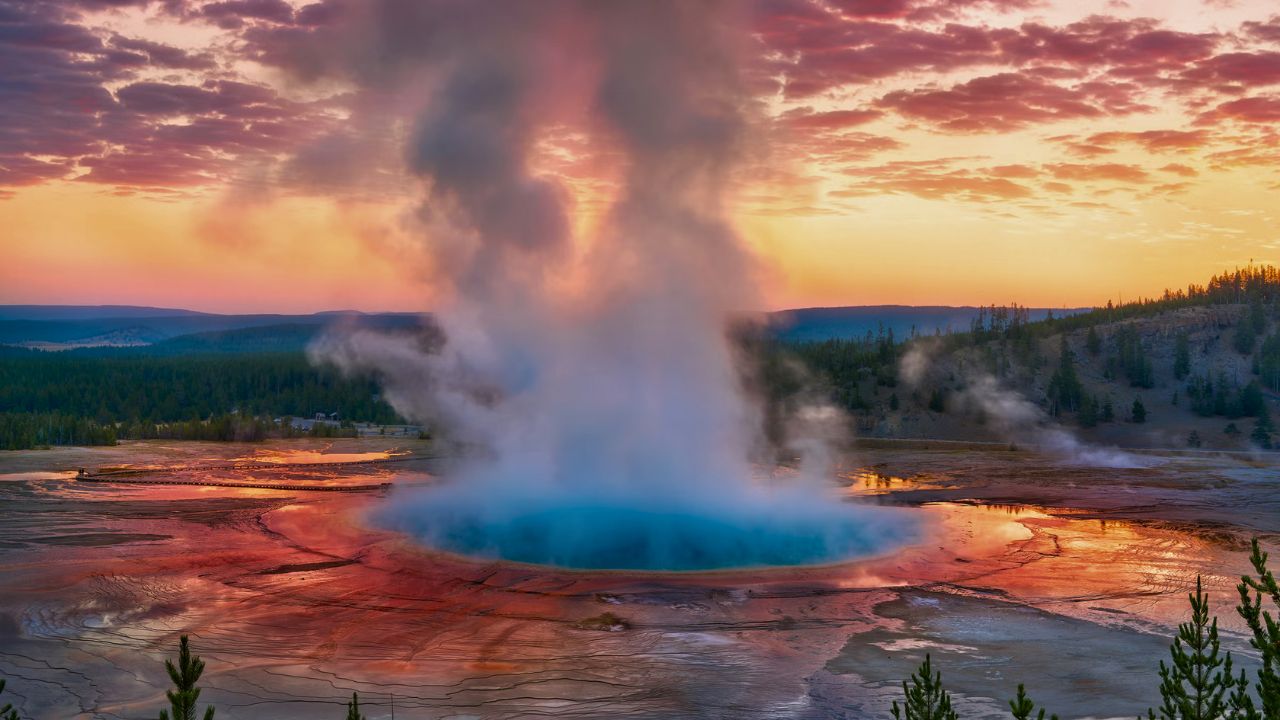
Leave a Reply